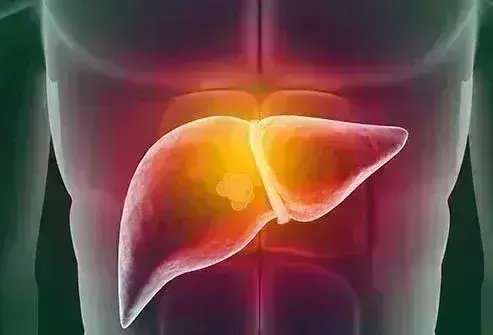- Home
- Medical news & Guidelines
- Anesthesiology
- Cardiology and CTVS
- Critical Care
- Dentistry
- Dermatology
- Diabetes and Endocrinology
- ENT
- Gastroenterology
- Medicine
- Nephrology
- Neurology
- Obstretics-Gynaecology
- Oncology
- Ophthalmology
- Orthopaedics
- Pediatrics-Neonatology
- Psychiatry
- Pulmonology
- Radiology
- Surgery
- Urology
- Laboratory Medicine
- Diet
- Nursing
- Paramedical
- Physiotherapy
- Health news
- Fact Check
- Bone Health Fact Check
- Brain Health Fact Check
- Cancer Related Fact Check
- Child Care Fact Check
- Dental and oral health fact check
- Diabetes and metabolic health fact check
- Diet and Nutrition Fact Check
- Eye and ENT Care Fact Check
- Fitness fact check
- Gut health fact check
- Heart health fact check
- Kidney health fact check
- Medical education fact check
- Men's health fact check
- Respiratory fact check
- Skin and hair care fact check
- Vaccine and Immunization fact check
- Women's health fact check
- AYUSH
- State News
- Andaman and Nicobar Islands
- Andhra Pradesh
- Arunachal Pradesh
- Assam
- Bihar
- Chandigarh
- Chattisgarh
- Dadra and Nagar Haveli
- Daman and Diu
- Delhi
- Goa
- Gujarat
- Haryana
- Himachal Pradesh
- Jammu & Kashmir
- Jharkhand
- Karnataka
- Kerala
- Ladakh
- Lakshadweep
- Madhya Pradesh
- Maharashtra
- Manipur
- Meghalaya
- Mizoram
- Nagaland
- Odisha
- Puducherry
- Punjab
- Rajasthan
- Sikkim
- Tamil Nadu
- Telangana
- Tripura
- Uttar Pradesh
- Uttrakhand
- West Bengal
- Medical Education
- Industry
Comparative analysis of thromboelastography and routine perioperative coagulation testing for major liver resection - PORTAL trial

Effects of Major Liver Resections on Coagulation-Recently published paper discusses the effects of major liver resections on the synthesis of coagulants and anticoagulants, resulting in a shift in the balance of coagulation and thrombosis. Bleeding is a significant concern postoperatively, and delayed initiation of pharmacological prophylaxis for venous thromboembolism (VTE) increases the risk. The removal of epidural catheters involves the requirement of a near-normal INR before removal, which has potential risks. Thromboelastography (TEG) is a sensitive test for evaluating coagulation, and the study aims to assess its use in liver resection compared to conventional coagulation tests (prothrombin time [PT], INR, and activated partial thromboplastin time [aPTT]). Value of Thromboelastography (TEG) in Liver Surgery A single-arm trial was conducted on patients undergoing major liver resections to evaluate the serial changes in conventional coagulation tests and TEG. The study found that TEG provided valuable information about the overall haemostatic status compared to INR in liver surgery patients. It showed a hypercoagulable state in some patients postoperatively, not detected by routine coagulation tests.
The study demonstrated that the use of TEG allowed for thromboprophylaxis continuation and facilitated the removal of epidural catheters without requiring blood product transfusion. Additionally, TEG significantly reduced the requirements for blood component transfusion. The study highlighted the importance of TEG in evaluating perioperative coagulation following liver resection and indicated that clinical decisions should be based on TEG parameters rather than PT/INR. The study acknowledges limitations such as the small sample size and the inability to track complications beyond the fifth postoperative day. Nevertheless, the findings support the effectiveness of TEG in assessing coagulation in patients undergoing major liver resections. The paper also references existing literature that emphasizes the poor correlation between TEG values and conventional coagulation tests, the association of liver resections with significant hypercoagulability, and the impact of TEG-guided monitoring on reducing FFP transfusion requirements. Conclusion and Implications In conclusion, the study underscores the significance of TEG in assessing coagulation during major liver resections, presenting a compelling case for its use over conventional coagulation tests. TEG provides valuable insights, aiding in thromboprophylaxis and transfusion strategies, as well as in the management of epidural catheters. The research suggests that TEG could potentially mitigate the risks associated with delayed pharmacological prophylaxis for VTE and the complications of transfusion therapy.
Reference –
Ambulkar, Reshma; Baskar, Vignesh1; Patkar, Shraddha2; Kunte, Aditya2; Agarwal, Vandana1; Solanki, Sohan Lal1; Divatia, Jigeeshu V1. Evaluation of perioperative routine coagulation testing versus thromboelastography for major liver resection – A single-arm, prospective, interventional trial (PORTAL trial). Indian Journal of Anaesthesia 67(12):p 1077-1083, December 2023. | DOI: 10.4103/ija.ija_344_23
MBBS, MD (Anaesthesiology), FNB (Cardiac Anaesthesiology)
Dr Monish Raut is a practicing Cardiac Anesthesiologist. He completed his MBBS at Government Medical College, Nagpur, and pursued his MD in Anesthesiology at BJ Medical College, Pune. Further specializing in Cardiac Anesthesiology, Dr Raut earned his FNB in Cardiac Anesthesiology from Sir Ganga Ram Hospital, Delhi.


